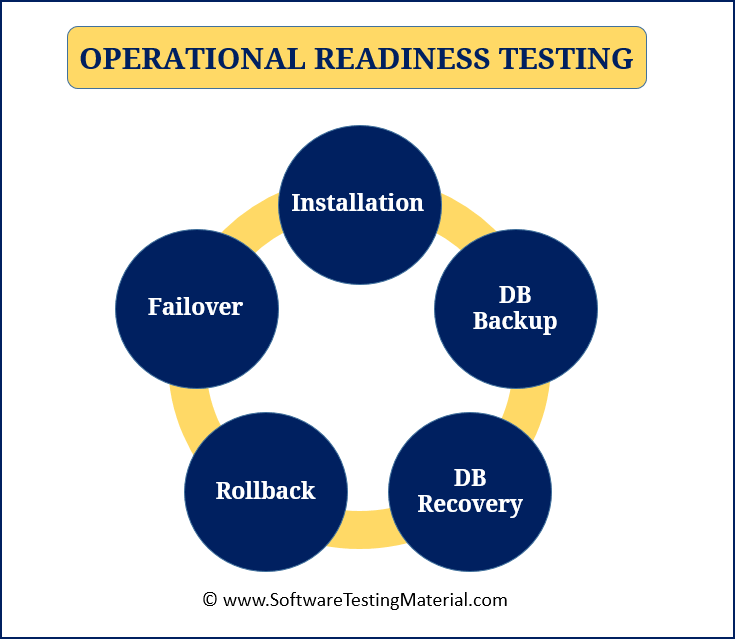What is Operational Acceptance Testing (OAT)

In this post, we will learn about Operational Acceptance Testing in detail.
Critical software bugs or defects can result in commercial failure of any service or product. Bugs in the software product frustrate the end user and make them leave the software without using it in the future. It is important to perform the operational testing throughly and accurately to overcome these problems.
What is Operational Testing?
In STLC, operational testing or operational acceptance testing (OAT) is done to evaluate the operational readiness of a software application before releasing to the production. It ensures the smooth system operation in its standard operating environment (SOE).
Operational Acceptance Testing is also known as Operational Readiness Testing (ORT) or Operations Readiness and Assurance Testing (ORAT).

Its main focus is to mimic the production environment.
Operational testing is a type of non-functional acceptance testing. It is performed during the last stage of STLC (i.e., after user acceptance testing (UAT) phase). It confirms that product, system, service or process meets operational requirements such as performance, security, reliability, accessibility, stability, maintainability, accessibility, interoperability, backup and recovery.
It peforms in a testing environment that is similar to the production environment.
It verifies whether the software operates the way it is intended without disrupting the business process.
What are the types of Operational Acceptance Testing?
The types of operational acceptance testing are
- SLA (Service Level Agreement) Monitoring Test
- Operational Documentation Review
- Code Analysis
- Installation Testing
- End-to-End Test Environment Operational Testing
- Performance Testing
- Load Testing
- Security Testing
- Backup and Restore Testing
- Fail over Testing
- Recovery Testing
What are advantages of operational testing?
The advantages of operational testing are as follows:
- It allows feature interaction
- It offers backup and restore facility, disaster recovery, operational support and many more
- It checks security vulnerability of the software.
- It ensures the optimum user experience by validating various aspects of the software before releasing to the public.
Conclusion:
Operational acceptance testing validates the product quality and ensure better user experience.
Related posts:
- What is Confirmation Testing
- What is User Acceptance Testing
- Quality Assurance vs Quality Control
- Non-functional Testing vs Functional Testing






